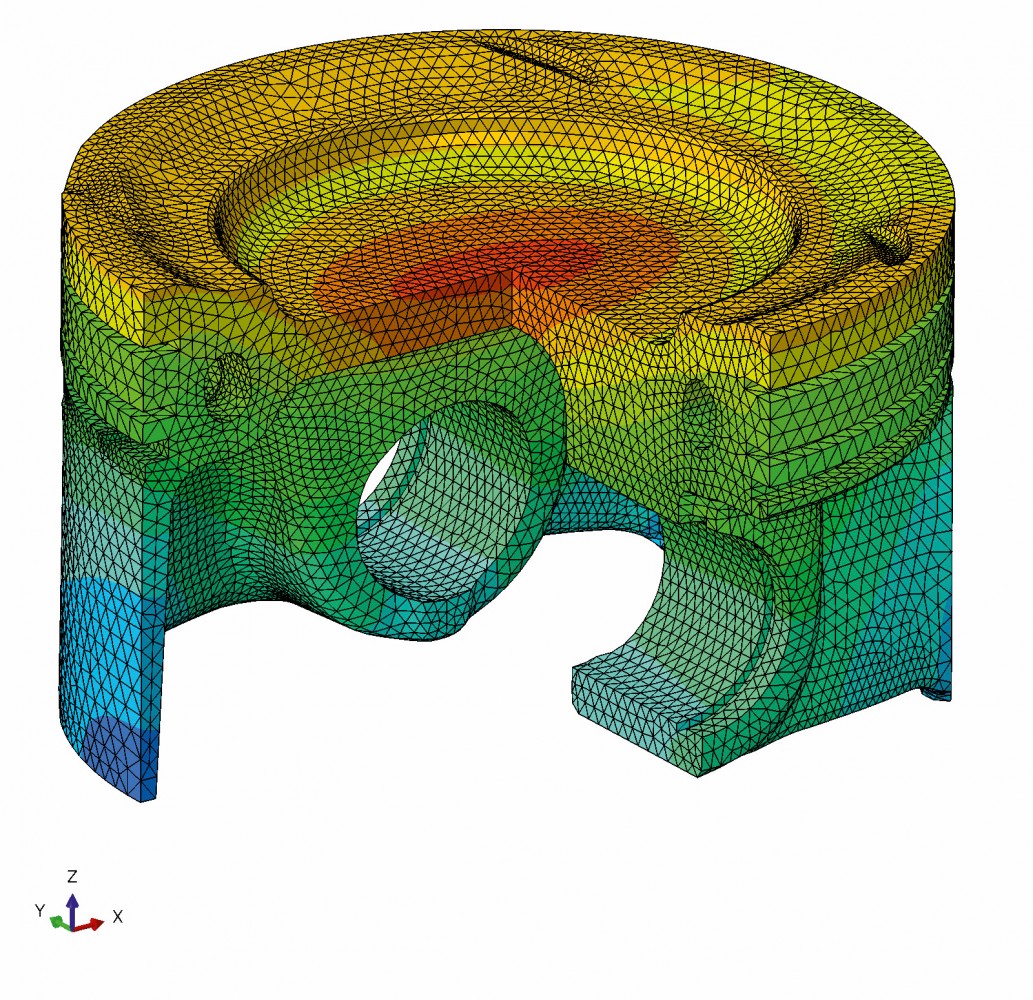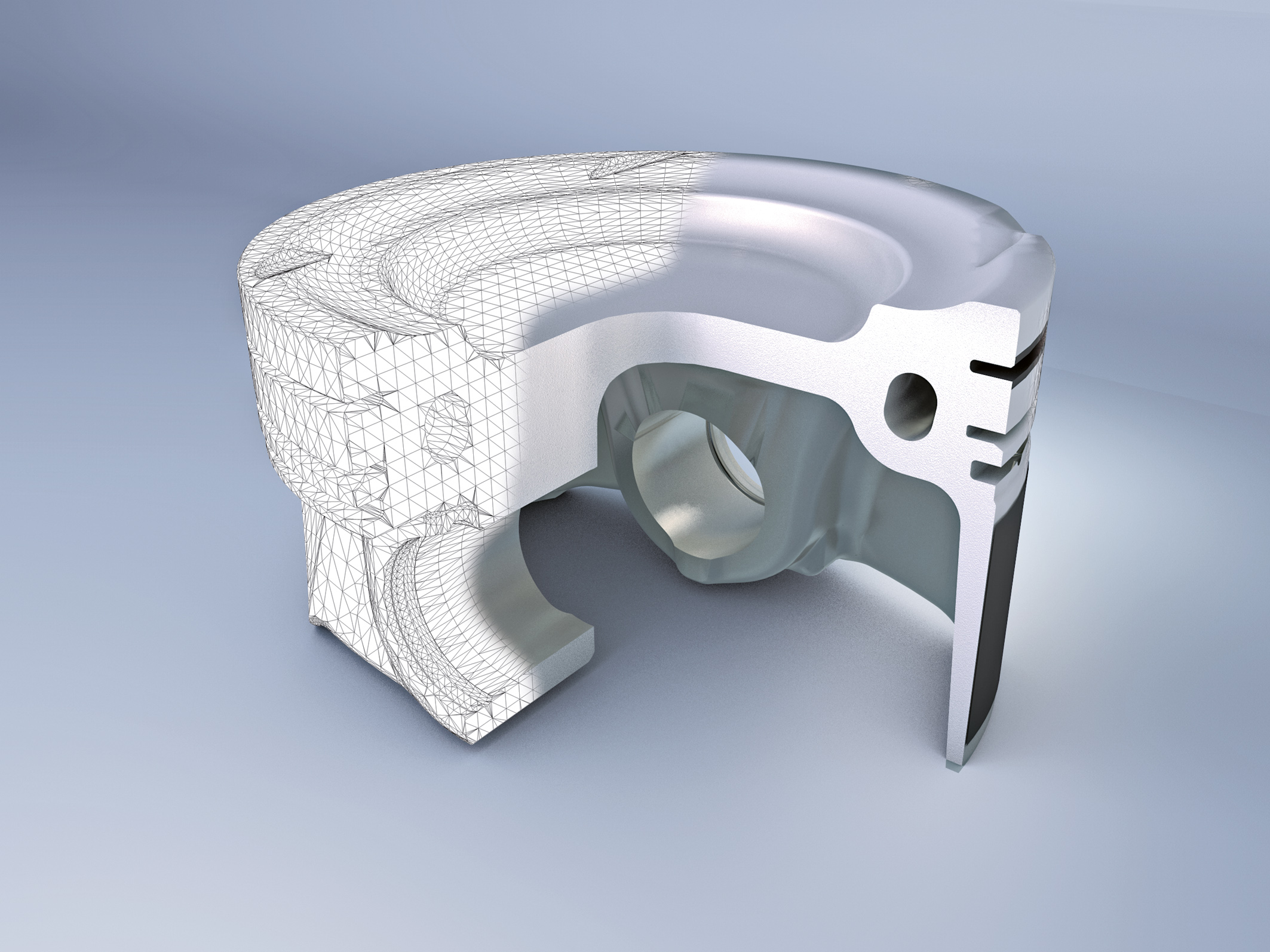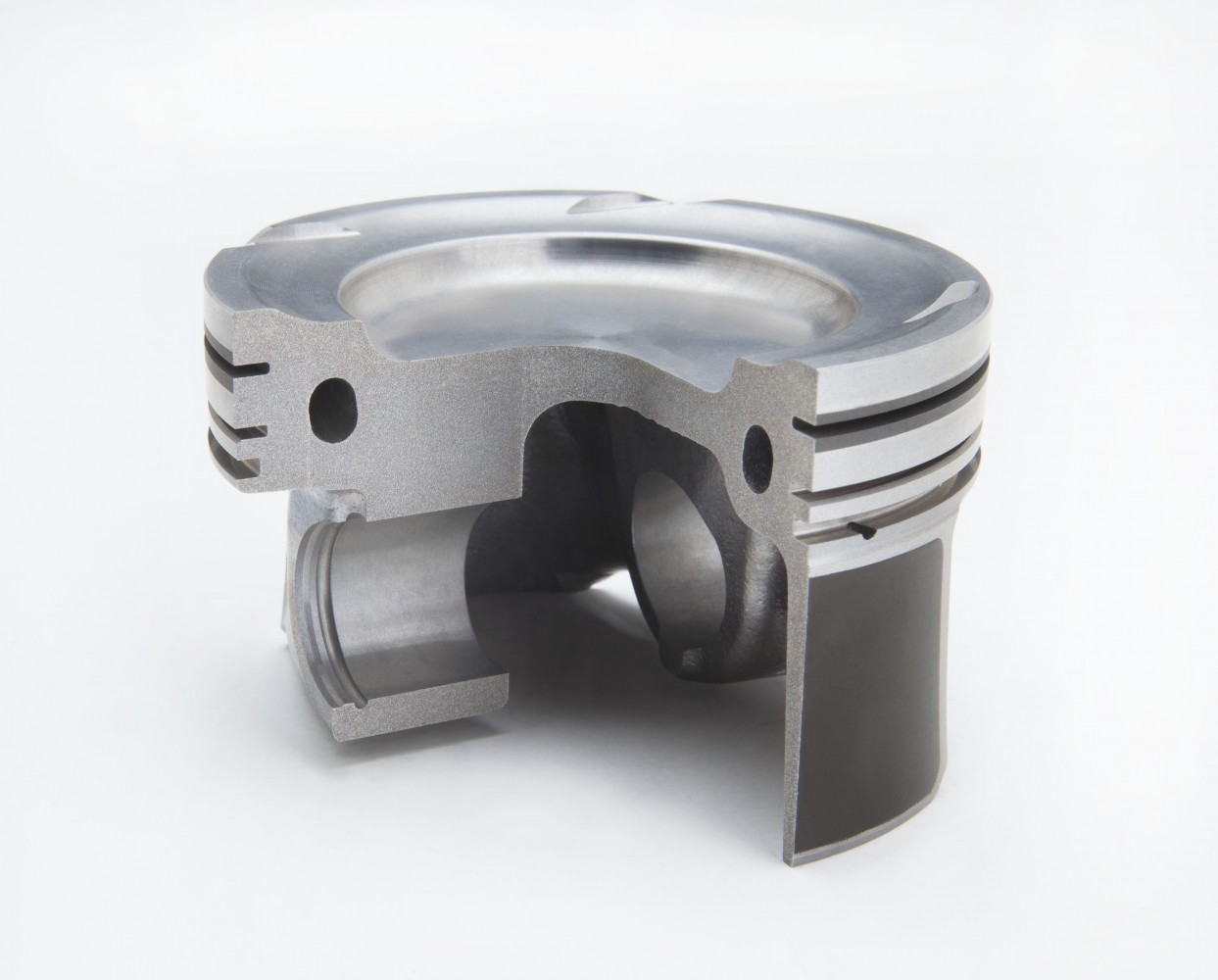Federal-Mogul Corporation’s Powertrain Segment is introducing a new Elastothermic® piston, designed for next-generation downsized gasoline engines. It allows vehicle manufacturers to further increase power density and compression ratios without compromising refinement or durability. The new piston combines the low mass and low friction benefits of its advanced Elastoval gasoline piston architecture with an improved cooling gallery design located higher in the crown of the piston. The new design decreases crown temperature, reducing the risk of detonation, or “knocking”, in hotter, higher pressure engines, while simultaneously maintaining high structural strength.
“Engine manufacturers continue to utilize higher levels of turbocharging to improve CO2 emissions, fuel economy and performance,” said Gian Maria Olivetti, Chief Technology Officer, Federal-Mogul Powertrain. “Our innovative new Elastothermic gallery-cooled gasoline piston enables these downsized engines to run at higher power levels and compression ratios with low NVH and outstanding durability.”



The Elastothermic piston is a step in the continuous development of the company’s advanced Elastoval piston architectures for gasoline engines. Advanced Elastoval is characterized by reduced boss gaps and a smaller distance between the side panels, which are angled or even multi-angled and use down to 2.5 mm section thicknesses. In most cases, a convex boss structure is used, with optional weight-relieving pockets in the pin direction.
Testing has shown that the Elastothermic piston gallery reduces the piston crown temperature by 25 Kelvin (K) to 30 K. The cooler crown and top-ring land area allows engine designers to calibrate the engine for more power, torque and fuel economy while minimizing calibration compromises to avoid pre-ignition “knock.” It also allows for the development of future engine designs with higher specific outputs.
The Elastothermic piston also decreases the temperature of the first ring groove by up to 60°C down to below 250°C which reduces carbon deposits and ring sticking, helping to keep oil consumption low and improving sealing. The lower operating temperature, in turn, improves scuffing resistance, allowing more cost-effective solutions for ring and groove tolerances. The reduction of knock also reduces wear and deformation of the first ring groove.
“Piston crown temperature is a key factor in piston durability and the fuel economy improvements that can be obtained by downsizing,” said Arnd Baberg, Chief Engineer, Piston Product Engineering, Federal-Mogul Powertrain. “The lighter weight and smaller section of gasoline pistons makes integrating cooling galleries far more challenging than in diesel pistons. Federal-Mogul’s materials and production expertise has allowed us to develop more precisely controlled casting processes that produce high-strength, lightweight pistons with galleries.”
Vehicle manufacturers in Asia, North America and Europe are developing engines with the new piston design that was developed in Federal Mogul’s R&D-center in Nuremberg, Germany. Production is scheduled to start during 2013 and Federal-Mogul will present Elastothermic piston technology at the IAA Show in Frankfurt from September 10-13, 2013.
Source: Federal-Mogul
Romain’s opinion:
Mechanical engineers are pushing back thermal and mechanical limits of materials for both gasoline and diesel engines. I expect gasoline engines to reach current diesel peak cylinder pressures in the coming 10 years. Do you think gasoline engines costs will be kept below diesel ones despite this tendency to extreme downsizing?




















